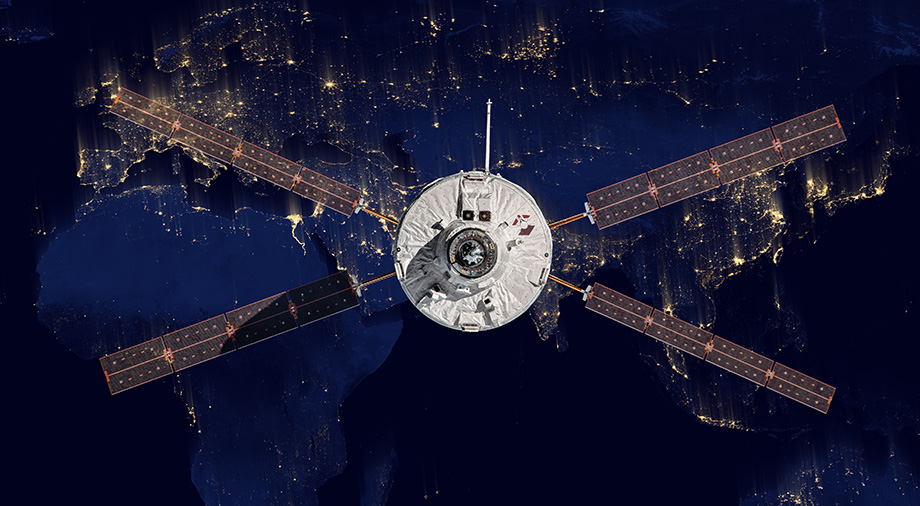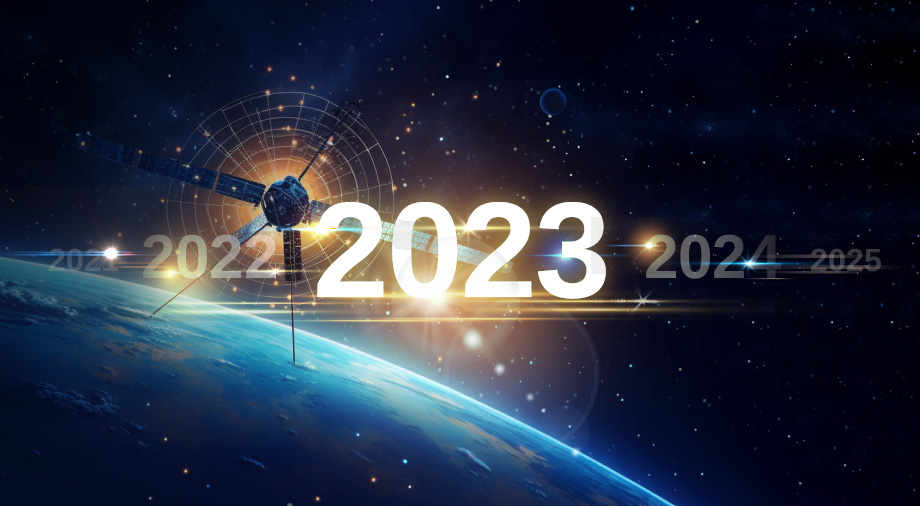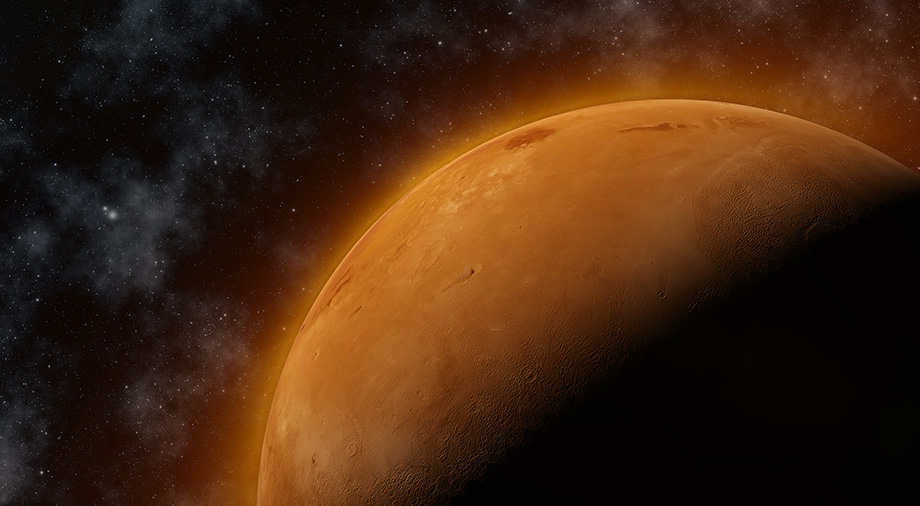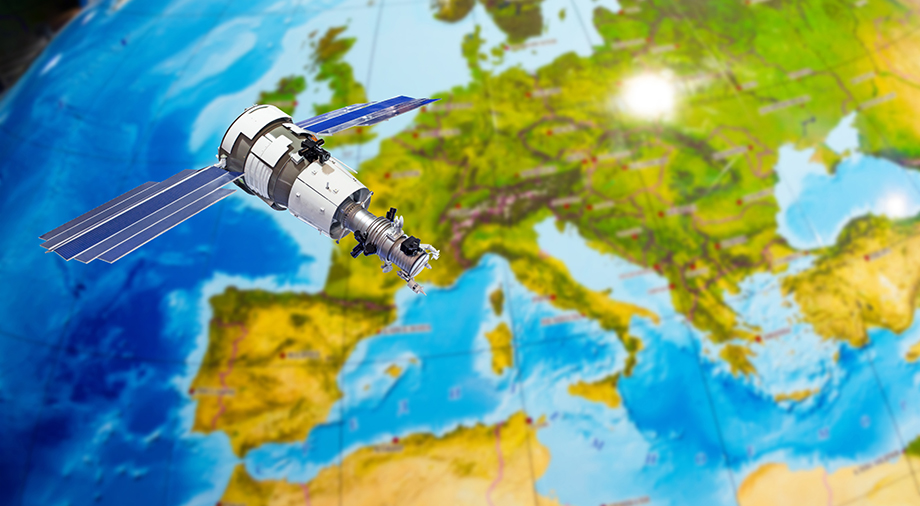In ancient mythology, there is a legend according to which Zeus (in the Roman tradition – Jupiter) turned into a white bull in order to steal Europa, the daughter of the Phoenician king and later godmother of the European continent, who had seduced him with her beauty.
According to the myth, Europa was full of horror and contempt for her captor, but everything turned out rather differently in the 20th-century history of space exploration. In fact, it was Europe’s space program which dreamed of exploring Jupiter.
Cassini–Huygens’s titanic symphony
ESA’s full-scale planetary missions did not begin with Jupiter. On October 15, 1997, Cassini–Huygens, a joint NASA/ESA mission, was launched on a Titan IVB/Centaur rocket. It was aimed at studying Saturn’s planetary system and even aimed to land a robotic landing platform on its moon, Titan. The Americans developed the Cassini orbital spacecraft concept, while the Europeans designed the lander, which was named Huygens after the 17th-century Dutch astronomer Christian Huygens, who first discovered Saturn’s moon in 1655.
Huygens consisted of two parts: a 2.7 m-wide protective heat shield, which was intended for entering Titan’s atmosphere, and a 1.3 m-wide main landing module.
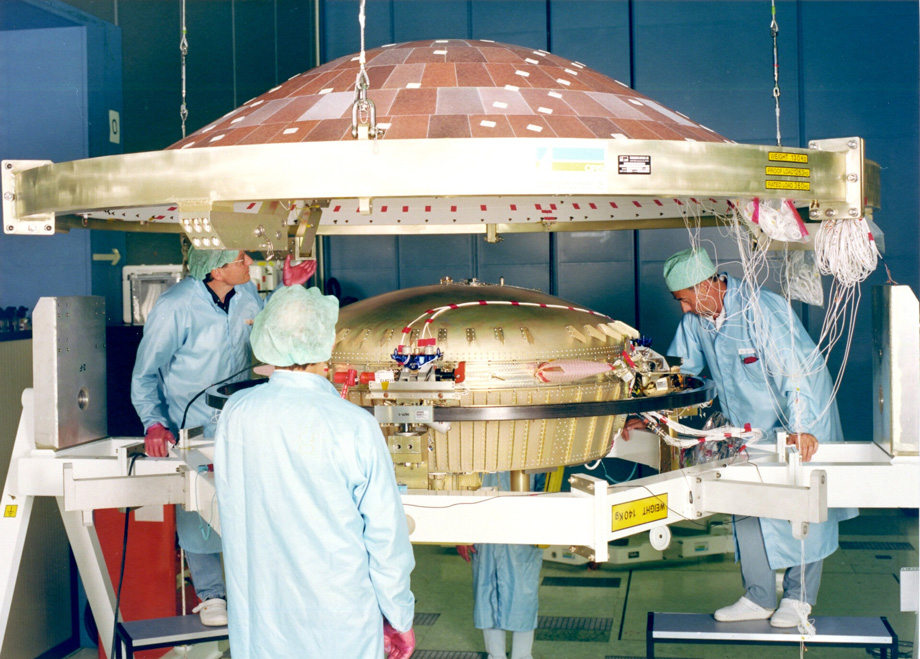
From the beginning, ESA experts designed Huygens with a short operational life in mind. The module’s active operation, which included collecting and sending scientific data back to Earth (via feedback systems with Cassini), was planned to last just 153 minutes. During this time, the probe was to use its entire scientific arsenal of six instruments:
- HASI (Huygens Atmospheric Structure Instrument) was an instrument to collect information about Titan’s atmosphere during the probe’s descent. It consisted of an accelerometer, an atmospheric pressure and temperature sensor, and a dielectric constant analyzer, which allowed the probe to obtain data on the momentum of electrons and ions in the Titan’s atmosphere. HASI even contained a microphone, with which ESA made the first-ever recording of sounds heard on another planet.
- DWE (Doppler Wind Experiment) – The Doppler effect experiment helped determine Huygens’ speed relative to Cassini, which remained in orbit. It operated from a stable oscillator that provided an equal S-band signal frequency.
- DISR (Descent Imager/Spectral Radiometer) was a descent camera and spectral radiometer. The experiment allowed the Huygens probe to document its descent to Titan. The spectral radiometer was aimed at measuring the radiation balance in Titan’s atmosphere. During the descent, the DI camera took more than 3,500 images, which were then included in a five-minute ESA movie.
This short film, created by the ESA based on data obtained from DISR, shows the landing process sped up by 40 and 100 times, respectively. The sounds heard from the left speaker were recorded during the landing using the probe’s microphone (you can hear the sound of the heat shield entering the atmosphere, its burning, and the deployment of the parachute). These audio fragments are mixed with sounds from the right speaker (continuous tone), which shows the audio communication signal between Huygens and Cassini
- GC/MS (Gas Chromatograph Mass Spectrometer) was a gas chemical analyzer that helped scientists determine the content of chemical substances in Titan’s atmosphere.
- ACP (Aerosol Collector and Pyrolyser) collected aerosol particles during the landing of the probe and heated them in a special chamber. Using the process of pyrolysis, it was possible to evaporate the volatile substances in the samples and determine the content of the aerosol particles.
- The SSP (Surface Science Package) measured the properties of Titan’s surface after the Huygens probe’s landing. It consisted of an acoustic echo sounder and an accelerometer for recording the deceleration profile during the contact of the probe with the moon’s surface (making it possible to study the density of its rocky surface). An auxiliary penetrometer was used on the SSP for the same purposes.
On Christmas Day 2004, Huygens permanently undocked from the Cassini orbiter and headed for its rendezvous with Titan, reaching its surface on January 14, 2005. The landing of the module took place in three stages: entry into Titan’s atmosphere, a braking maneuver with the release of the heat shield, and landing using a parachute system developed by the American company Martin-Baker Aircraft Company Limited.
The successful landing on Titan made ESA the first agency in the world to successfully land an unmanned spacecraft within the Outer Solar System, and also the first to land on another planet’s moon. In spite of certain difficulties — primarily a partial loss of data due to an error with one of the two Huygens–Cassini communication channels — the mission was a colossal success. It opened the window of opportunity for the realization of two more ambitious projects from the study of Venus and Mars.
Venus/Mars — did someone order an express?
After conquering Saturn’s planetary system, ESA began directing its efforts towards other planets. In the first years of the new millennium, two ambitious programs were carried out simultaneously: one for the study of Mars, named Mars Express, and the other for the study of Venus, called Venus Express.
First, it was Mars’s turn. The mission planned to send an orbital vehicle called the Mars Express Orbiter to the Red Planet. The probe was equipped with the European-made Beagle-2 lander, with which ESA hoped would carry out a series of exobiological, mineralogical, and geochemical studies. The orbital module was mainly intended for obtaining high-resolution images of Mars, mapping the mineral saturation of the Martian soil, studying the atmosphere, and radar mapping of Mars’s surface.
The specialists working on Mars Express were quite lucky – the mission’s launch was scheduled at a time when the orbits of the Earth and Mars came closest to each other in 60,000 years.
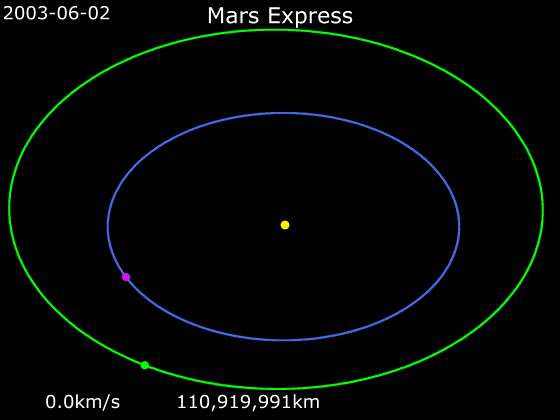
Mars Express launched on June 2, 2003, aboard a Russian Soyuz-FG rocket from the Baikonur Cosmodrome. This cooperation between the space agencies of Europe and Russia was a demonstrative example of the short-sightedness of the leadership of both NASA and ESA. Cooperation between the two Western agencies weakened in the late 1990s, when US legislation severely curtailed NASA’s sharing of scientific data, because, according to American senators, it threatened the country’s national security. The ill-advised decision brought ESA and Roscosmos dangerously close over the course of several decades, leading to the planning of a number of joint projects with the Russians, which ended only with Moscow’s full-scale invasion of Ukraine. This included the ExoMars joint project, whose goal was to deliver and deploy the Rosalind Franklin robotic rover on the surface of Mars.
Back on the subject of the Mars Express. After launch, its journey lasted five months, at the end of which on Christmas Day 2003, the probe reached Mars’s atmosphere and began its exploration mission, which is still ongoing. A week before this event, on December 19, 2003, the Beagle-2 lander was launched towards Mars, but unfortunately, it disappeared during its attempt to descend to the surface of the planet. The lander’s fate remained unknown for nearly 12 years until NASA’s Mars Reconnaissance Orbiter recorded its presence on Mars’s surface using the HiRISE (High Resolution Imaging Science Experiment) system. It turned out that the probe had landed successfully, but due to an anomaly, it was unable to deploy its solar panels, preventing it from establishing reliable communication with Earth.
Therefore, even after the loss of Beagle-2, the Mars Express Orbiter continues to successfully perform its tasks in orbit. During this time, the probe recorded ice caps at the south pole of the planet, detected methane content in the Martian atmosphere, and was able to establish the presence of hydrated sulfates, silicates, and various rock-forming minerals in the Martian soil. In recognition of the major contributions that the Mars Express Orbiter is making to science, in March 2023 the ESA prolonged its mission to the end of 2026.
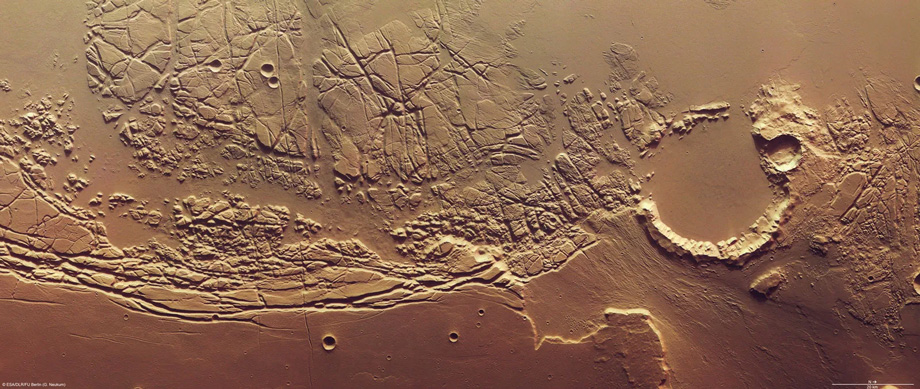
The Venus Express mission (abbreviated as VEX) launched on November 9, 2005, also aboard a Roscosmos Soyuz-FG. It was ESA’s first space mission to explore Venus.
The probe’s journey lasted 153 days. On April 11, 2006, the VEX spacecraft reached the polar orbit of Venus and began its research mission. For nearly nine years, Venus Express primarily focused its efforts on carefully studying the atmosphere of Venus in order to track the dynamics of its changes. VEX’s other mission was to try to detect life on Earth-like exoplanets. In the process of observing our planet from the orbit of Venus, many techniques have been developed to identify potential candidates for inhabited worlds from a long distance.
As for the study of Venus itself, the probe managed to find evidence of the existence of large oceans on the planet in the past. VEX also recorded the presence of twin atmospheric vortices and lightning on Venus (which was even more common there than on Earth). The probe also discovered hydroxyl molecules (formed by oxygen and hydrogen atoms) in the Venusian atmosphere, which was the first confirmation of their presence on planets of our solar system beyond Earth. The detection of these molecules was extremely important because they are very reactive. The presence of hydroxyl in the Earth’s atmosphere is closely tied to the abundance of ozone, and according to the research that VEX was able to carry out, the same was true for Venus. The planet’s atmosphere contains ozone residues. The large volume of data obtained with the help of VEX was presented in a series of scientific articles in the journal Nature published throughout 2007.
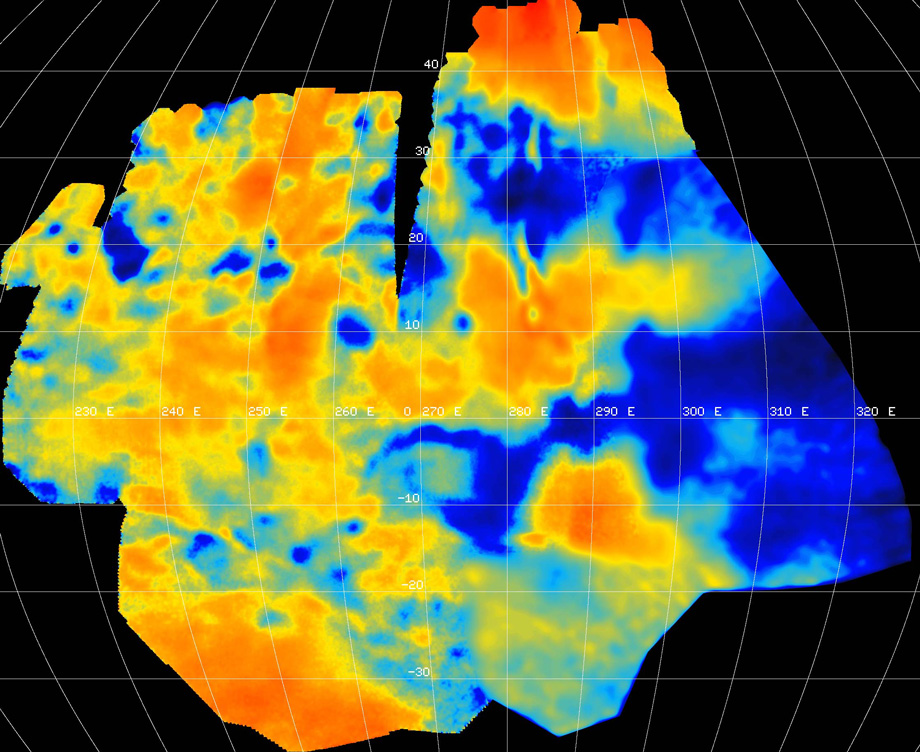
In many ways, the VEX orbiter was similar in design to its Mars-bound counterpart. The few changes concerned only the probes’ communication, power, and thermal control systems, as the VEX had to be much closer to the Sun. The Venus mission finally ended on November 28, 2014, when ESA lost contact with VEX, likely due to a lack of fuel. VEX was still detectable in orbit around the planet, but it had no way of communicating back to Earth. ESA last received a signal from VEX on January 18, 2015.
Current and future space programs
Beginning in 1985, ESA implemented two successive space programs spanning ten and twenty-year periods – the Horizon 2000 and Horizon 2000+, respectively.
Horizon 2000 (1985-1995) was Europe’s first global space program based on four cornerstones, the space missions that were the hallmark of ESA’s ten-year campaign. Above all, Horizon 2000 faced a significant lack of funding. Thus, instead of the ESA’s proposed 7% annual increase in program budgets up to and including 1991, the agency managed to get only a 5% increase, and even then only through 1989. The lack of funds led to almost 50% of the proposed space missions being at risk of cancellation. Only a budget review in 1990 and a final decision to increase funding by 5% through 1994 provided the necessary financial impetus to make all of the program’s space missions a reality.
Thus, during the Horizon 2000 program, ESA completed five large space missions, as well as three medium-scale missions:
- SOHO (Solar and Heliospheric Observatory) — shared with the American NASA space mission to deploy the Solar and Heliospheric Observatory at the L1 Lagrange Point. It was launched on December 2, 1995, onboard a Lockheed Martin Atlas IIAS rocket. It is still active and provides up-to-date data on space weather and the general state of the Sun (as part of Cornerstone 1).
- Cluster 1 and Cluster 2 are ESA space missions (also supported by NASA) to study the Earth’s magnetosphere over two solar cycles using a constellation of four spacecraft. Cluster 1 suffered an unfortunate fate, being lost due to a critical error that occurred during the launch of its Ariane 5 rocket in 1996. However, by the period from February to August 2000, four new instruments of the standby Cluster 2 mission were launched into orbit, which are still performing the task of observing the magnetosphere (also part of Cornerstone 1).
- XMM-Newton (X-ray Multi Mirror) was the launch of a modern X-ray observatory for the detection and study of point sources of gamma radiation in the universe. The mission was launched in December 1999 and is still in active status (part of Cornerstone 2).
- Rosetta was an amazing mission carried out by ESA’s efforts to study the comet Churyumov–Gerasimenko/67P. The launch took place on March 2, 2004. The unmanned Rosetta probe was equipped with the Philae lander, which on November 12, 2014, on its third attempt, made the first soft landing on the nucleus of a comet (part of Cornerstone 3) in human history.
- HSO (Herschel Space Observatory) was an ESA space mission that resulted in the deployment of an infrared telescope at the L2 Lagrange point in 2009, which operated until 2013. Before the commissioning of the infrared James Webb telescope, the HSO was the biggest space-based infrared telescope (part of Cornerstone 4).
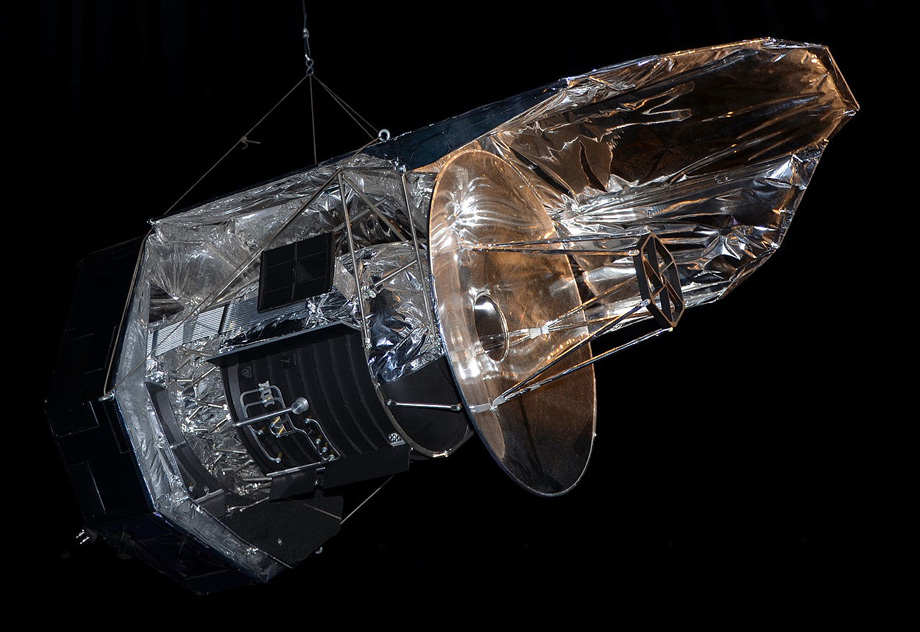
Source: User Pline
The three companion missions carried out under the Horizon 2000 program were the successful landing of the Huygens probe on Titan, the 2002 deployment of the X-ray observatory INTEGRAL (INTenational Gamma-Ray Astrophysics Laboratory, which remains active today), and the deployment of the Planck observatory, whose main purpose was to map the cosmic microwave background (the observatory operated from 2009 to 2013).
As we can see, all the proposed missions within the Horizon 2000 program were successful for Europe (even the timely replacement of Cluster 1 with Cluster 2, which took place over the course of years). But while these space missions were still in the planning stage, ESA decided to expand Horizon 2000. This led to the advent of Horizon 2000+, which covered the twenty-year period of 1995-2015.
The program focused on the execution of three very ambitious space missions:
- Gaia space observatory — Launched in 2013, Gaia (named for the ancient Greek goddess) will work until the second quarter of 2025. The observatory’s main task is astrometry — the measurement of the distances to more than a billion objects in the Milky Way galaxy using various comparative methods, primarily based on the level of luminosity and color of the studied objects. The observatory is also able to identify over half a million quasars located outside the solar system.
- The LISA Pathfinder (Laser Interferometer Space Antenna) was an astronomical observatory focused on the search for gravitational waves. The observatory was launched by ESA on December 3, 2015, and operated in a halo orbit at the L1 Lagrange point. The spacecraft’s mission began on March 8, 2016 (it was preceded by a three-month phase of travel, as well as the deployment and testing of scientific instruments). The LISA Pathfinder operated for 576 days, finally being deactivated at the end of June 2017. Based on the results of the LISA Pathfinder experiment, ESA gained valuable experience in detecting gravitational waves, which is planned to be used in future versions of LISA.
- BepiColombo is a space mission by both ESA and the Japanese JAXA for the exploration of the Mercury planetary system. It consists of two satellites, the MPO (Mercury Planetary Orbiter) and the Mio (Mercury Magnetospheric Orbiter), and was launched on October 20, 2018, aboard a European Ariane 5 rocket. It remains active and is constantly updating data on both Mercury’s magnetosphere and the planet’s internal and surface structure.
ESA’s current major space program, named Cosmic Vision: Space Science for Europe, covers the 2015-2025 period. To date, Cosmic Vision has launched only four of its 12 planned missions. Currently, two of them are already active, and two more (Solar Orbiter and JUICE) are on their way to their activation points. For convenience, ESA has divided the Cosmic Vision program’s space missions into four main classes: S (small-class missions), M (medium-class missions), L (large), and F (fast).
The launch of the CHEOPS space telescope on December 18, 2019, was the first success of ESA’s Cosmic Vision. The 273 kg telescope was assigned to the S-class, and its main purpose was to detect and classify the size and composition of transiting exoplanets outside the Solar System. CHEOPS conducts its research from a solar-synchronous orbit at an altitude of 700 km.
Another triumph took place in July 2023, when the second M-class mission, Euclid, was launched (the first was the mission of the Solar Orbiter probe, which set off on its journey in February 2020).
Euclid, equipped with a powerful telescope with a camera with a 600-megapixel resolution, entered its working orbit in the region of the L2 Lagrange point and began to perform tasks aimed at solving the secret of the formation of dark matter and dark energy. These are invisible forms of matter and energy that do not interact with light and the electromagnetic field, however, according to scientists, both make up to 95% of the total content of matter in our universe (according to preliminary calculations, dark energy supposedly makes up 68.2% and dark matter makes up 26.8%). To capture at least some presence of these structures in the universe, Euclid has a near-infrared spectrometer and a photometer to determine the redshift coming from detected galaxies. The space observatory works in conjunction with the Gaia Observatory and the recently launched James Webb Telescope.
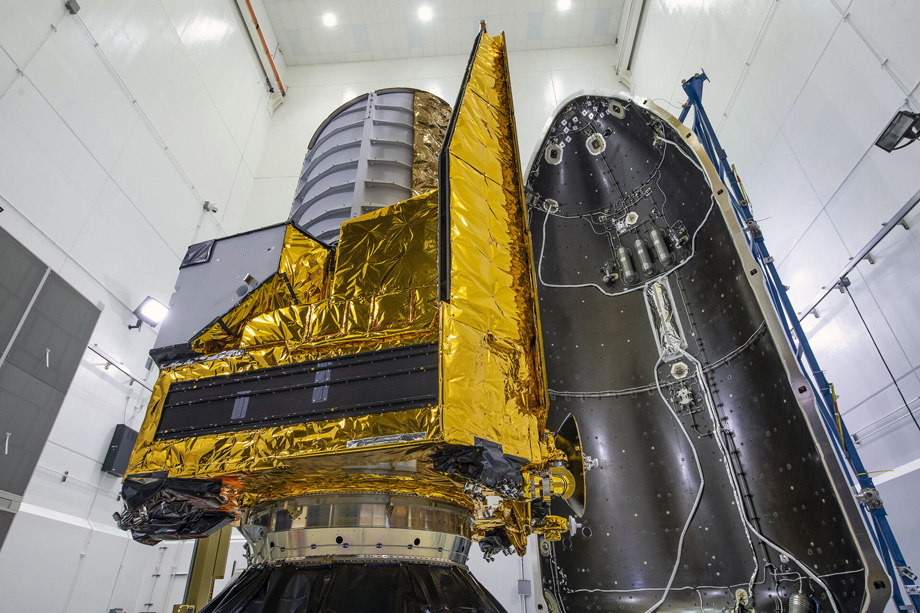
The first L-class mission to be launched was a space laboratory for the study of the Jupiter planetary system called JUICE (Jupiter Icy Moons Explorer). The launch of the huge, nearly 6-ton probe took place on April 14, 2023, and came on the penultimate launch of the Ariane 5 rocket. JUICE’s transit to the Jupiter system will continue for eight long years, after which it will start its scientific mission to study the three main Jupiter moons: Ganymede, Callisto, and Europa. That’s right: Europe will reach Jupiter to explore Europa – an amusing, cosmic-scale pun from the European Space Agency.
Eight more space missions of the Cosmic Vision program are planned up to and including 2037. They include the launch of XMM-Newton’s successor, the X-ray space observatory Athena (probable launch in 2035); the launch of another LISA experiment (2037); the deployment of ARIEL, the successor of the Planck space observatory for studying the atmospheres of discovered exoplanets (scheduled for 2029), and the Venus mapping mission EnVision (planned for 2031).
Another large space ESA program called the Living Planet Programme (LPP) will focus purely on research and monitoring of the Earth. It consists of nine Earth Explorers (five base missions and four additional missions of opportunity), which are planned to be launched by 2027. The program is aimed at obtaining information on the dynamics of climate change, the level of the world’s oceans, forecasting weather phenomena, and developing methods for the smart use of planetary resources.
ESA’s ambitions today are aimed at conquering space and truly have no limits. However, many of these projects would never have come to life without European-made rocket technology and spaceships. It was these things that opened the window of opportunity and to a certain extent guaranteed European independence in the autonomous delivery of its scientific payloads and satellites into orbit for both scientific and commercial purposes. Read about the development of the European Space Agency’s own rocket program in the final instalment of our series devoted to the history of the formation of ESA.

